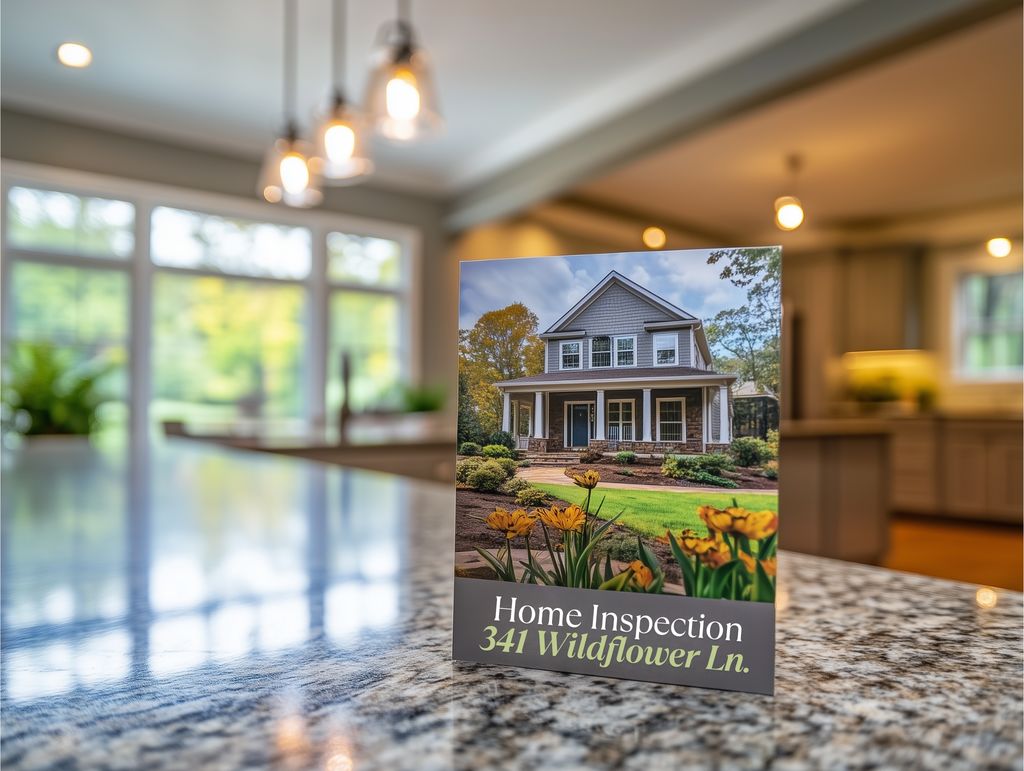If you’ve ever sold a home—or even just considered it—you probably know the general rhythm of the process: stage the house, list it, show it, negotiate offers, and, somewhere in the middle of all that, there’s the inspection. For many sellers, the home inspection feels like a wild card. Will it turn up a major issue? Will buyers use it to renegotiate? Will it delay the closing? But what if you could take the mystery out of it before your home even hits the market?
Enter: the pre-listing home inspection—one of the most underrated tools in a seller’s toolkit. Not only can it help you sell faster, but it can also reduce stress, improve your marketing materials, and build serious trust with buyers. In today’s competitive market, especially in places like Wilmington and the surrounding coastal communities, a pre-listing inspection can be the ace up your sleeve. Let’s break down what a pre-listing inspection is, the benefits it offers, and how to leverage it to sell your home faster—and for top dollar.
What Is a Pre-Listing Home Inspection?
A pre-listing inspection is exactly what it sounds like: a home inspection that a seller orders before putting their home on the market. Just like the inspection a buyer would order once under contract, a licensed inspector will assess the condition of your home from top to bottom—roof, HVAC, electrical, plumbing, foundation, appliances, attic, crawl space, the works. The difference is timing. Instead of waiting for the buyer to initiate the inspection after an offer has been accepted, you get out in front of it. That means you get a heads-up on potential issues and can make strategic decisions about repairs, disclosures, and pricing—all before the first showing.
Why Bother With a Pre-Listing Inspection?
Great question—especially since, yes, you will have to pay for it. Inspections typically range from $300 to $600, depending on the size and complexity of the home. But consider this: the inspection report is something every serious buyer will want to see eventually. By getting it done upfront, you turn it from a potential obstacle into a powerful selling point.
Here’s how:
1. Build Trust With Buyers
In any transaction, trust matters. In real estate, it’s huge. When you provide buyers with a professional inspection report before they even make an offer, you’re sending a clear message: “We’ve got nothing to hide.” This kind of transparency immediately lowers the guard of prospective buyers. It signals that you’ve taken good care of your home and are committed to a smooth, honest sale. In fact, this strategy can be especially effective for first-time buyers, who often feel nervous about what they can’t see or don’t understand about a home’s condition. Being upfront with your inspection can give them the confidence to move forward quickly—and maybe even submit a stronger offer.
2. Avoid Last-Minute Surprises
Buyers’ inspections are notorious for throwing curveballs at sellers. Maybe the HVAC system is older than you thought. Maybe there’s some unexpected moisture in the crawl space. Or maybe there’s something small—but alarming-sounding—like double-tapped breakers in the panel. Any of these can lead to price renegotiations, delays, or even lost deals. When you do a pre-listing inspection, you eliminate these surprises. You know exactly what’s going on with your home, and you can choose how to address it:
-
Fix it now and market your home as “pre-inspected and move-in ready.”
-
Disclose it upfront, which builds trust and protects you from future liability.
-
Adjust your pricing or strategy accordingly.
That kind of control can save you thousands and dramatically reduce stress during negotiations.
3. Use It as a Marketing Tool
Here’s where things get really interesting: your pre-listing inspection isn’t just a behind-the-scenes strategy—it’s a marketable feature. You can include inspection reports in your listing packets, hand them out at open houses, and upload them to MLS attachments or digital folders. In an age where buyers expect more information, giving them a full inspection report can differentiate your home from others in your price range. Better yet, pair the inspection with a list of completed repairs, receipts, and even warranties. Now you’re not just selling a home—you’re selling peace of mind. Some buyers might even waive their own inspection (or at least shorten their due diligence period), which can get you to the closing table faster.
4. Justify Your Asking Price
Ever worry that buyers will think your home is overpriced? A pre-listing inspection can help you justify your asking price with evidence. If your report shows the roof is in great condition, the HVAC is recently serviced, the foundation is solid, and everything’s up to code, that strengthens your pricing position. It gives your real estate agent ammunition when marketing the home and negotiating offers. We can say, “This home is priced accurately because it’s been professionally inspected—and here’s the report to prove it.” And that makes it harder for buyers to come in with lowball offers “just in case” something is wrong.
5. Speed Up the Sale
At the end of the day, most sellers just want to sell quickly and with minimal stress.
A pre-listing inspection can fast-track the entire process by:
-
Reducing buyer hesitation
-
Smoothing out negotiations
-
Minimizing the back-and-forth of due diligence
-
Allowing you to close sooner
In hot markets, buyers move fast. If your home comes with an inspection report and a clean bill of health, a serious buyer may decide to make an offer that very same day.
How to Make the Most of a Pre-Listing Inspection
✅ Choose a Reputable Inspector
Use a licensed, well-reviewed home inspector with local experience. Ask your real estate agent for referrals—we work with trusted pros all the time and can recommend someone who’s thorough, fair, and familiar with regional quirks (like crawl spaces in coastal North Carolina).
✅ Make Minor Repairs First
Before the inspector arrives, take care of obvious maintenance issues. Replace burnt-out lightbulbs, fix leaky faucets, re-caulk the tub, and clean HVAC filters. This creates a better first impression and can help keep your report cleaner.
✅ Be Present—but Not Hovering
You don’t have to leave the house during the inspection, but give the inspector space to do their job. It’s okay to ask questions, but don’t try to lead them or influence their observations.
✅ Review the Report Carefully
Once the report is in hand, read it thoroughly. Ask your agent to go over it with you and help decide what (if anything) should be repaired, disclosed, or simply noted. Some issues might sound scarier than they are. For instance, “improper drainage” might mean you just need to redirect a downspout. Other issues, like polybutylene plumbing or roof damage, might need more immediate attention.
✅ Decide on a Repair Strategy
There are three main strategies here:
-
Fix major issues before listing.
-
Disclose them and adjust the price.
-
Offer a credit or negotiate post-inspection.
Your agent can help you weigh which approach makes the most sense for your home, your budget, and your local market.
✅ Promote the Inspection in Your Marketing
This is the big one. Make sure your listing, flyers, and open house materials highlight the fact that the home has already been inspected.
Here are some phrases you can use:
-
“Pre-Inspected for Buyer Peace of Mind”
-
“Move-In Ready with Repairs Completed”
-
“Inspection Report Available Upon Request”
You can even include a digital link to the report or a binder with all the documentation at showings.
A Word of Caution: Disclosure Rules Still Apply
In North Carolina, if you know about a material defect in your home, you’re legally required to disclose it to buyers. So once you’ve done a pre-listing inspection, you do have to share known issues—even if you decide not to fix them. But don’t let that scare you off. Most buyers appreciate honesty, and full disclosure actually protects you from legal problems down the line. As long as you work with a professional agent who understands disclosure laws and how to present information strategically, you’re in good shape.
Final Thoughts: Trust Sells Homes
Buyers today are savvy, informed, and—understandably—wary of hidden problems. In an era where “buyer beware” still looms large, a pre-listing home inspection can flip the script. By embracing transparency, you remove fear from the equation. You replace it with confidence, clarity, and peace of mind—and that can be the tipping point that helps your home sell faster, and for more money. Whether you’re prepping a cozy beach cottage in Carolina Beach, a downtown Wilmington bungalow, or a family home in Hampstead, a pre-listing inspection is a smart, strategic move that sets your listing apart.
Want help deciding if it’s right for you? The Cameron Team is here to guide you through the process, connect you with trusted inspectors, and help you position your home for success. Let’s talk strategy—your fastest sale might start before the “For Sale” sign even goes in the yard.
Thinking of selling your home in the Wilmington area?
Contact The Cameron Team today for a free consultation and personalized pre-listing plan.





